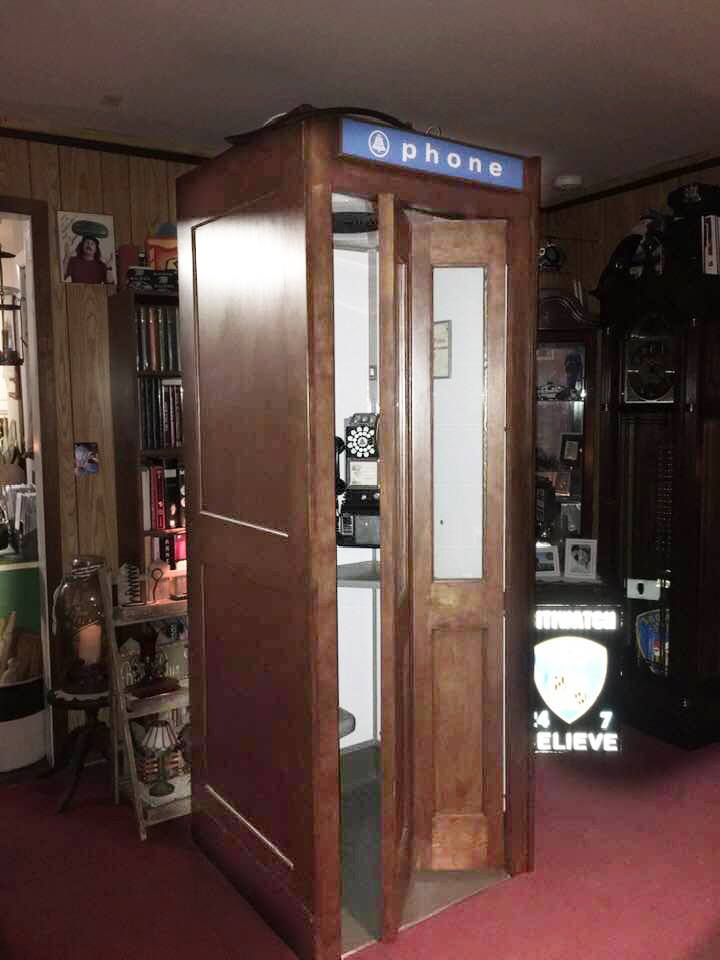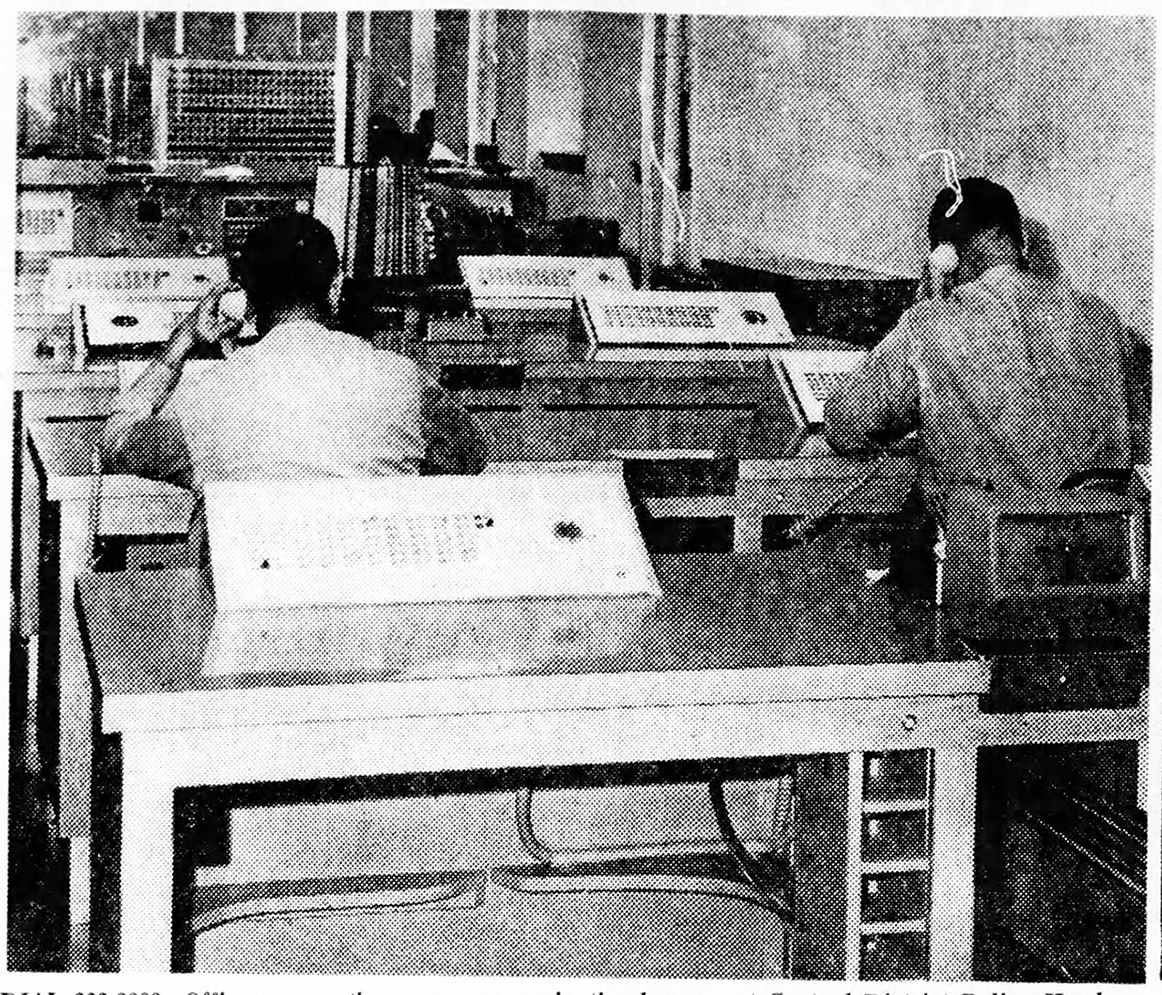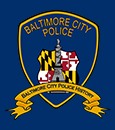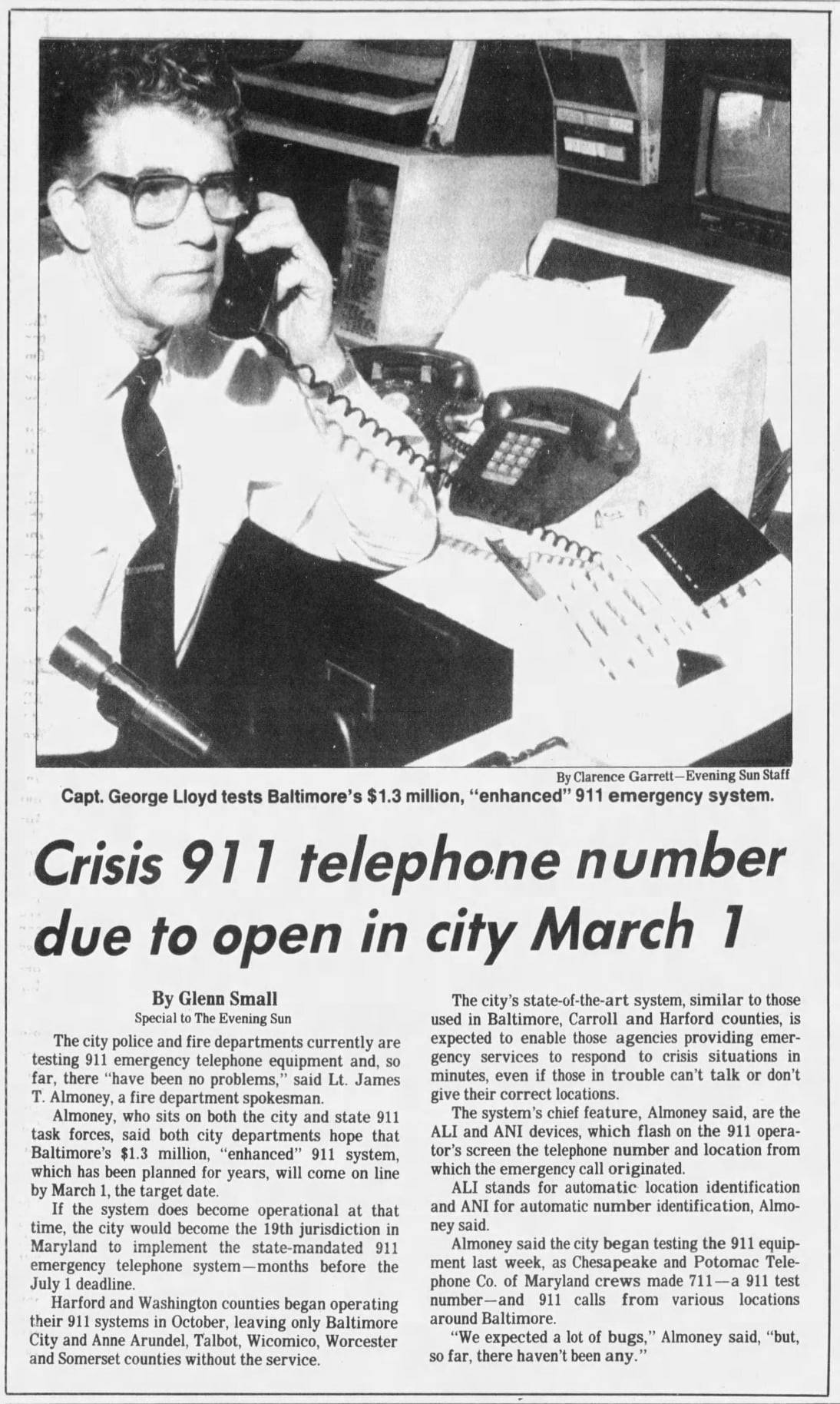222-3333
222-3333
Emergency Number

20 May 1987
Emergency Number - Call Police at 222-3333
The City Police Department's communication bureau will start an expanded operation at 8 A.M. tomorrow. Citizens in distress are urged to call the police on the new EMERGENCY NUMBER: 222-3333 Police officials, anxious to put the new nerve center in operation, predict that persons calling for police assistance will get "quick telephone response and prompt service."
Two of the major criticisms made by the International Association of Chiefs of Police last year was that the public had difficulty contacting the department on its overloaded telephone circuits and officers were slow in arriving at trouble areas.

150 More Radio Cars
To correct both problems the department has increased from five to ten the number of emergency telephone lines to communications, and added about 150 radio cars to its patrol fleet. In addition, patrol cars will be dispatched on four frequencies instead of the present two. Along with the increased number of dispatch frequencies and the additional emergency telephone lines the communications bureau has added more than a dozen men to operate the modernized system. The over-all change was precipitated by a general increase in calls for service, the added mobility of the department and a new and more accurate reporting and-records-keeping system which is gradually being phased into the department, district by district.
More Arrests Forecast
An official in the Planning and Research Division said that surveys have revealed that by culling the response time- how long it takes the police to get to the scene of reported crime the department will increase its arrest percentage. The cost of the new communications center was greatly reduced by the use of the department's maintenance crew which has worked on a crash schedule for the past four months to have it completed by tomorrow's deadline. The entire radio system was designed and installed by departmental personnel assigned to the communications bureau. The multi-position console was fashioned and constructed by the maintenance crew, which also ripped out partitions of four rooms and a hall to create one large room in which to locate the new facility. One official estimated that the department may have saved close to $200,000 by drawing on the talents of its members.

DIAL 222-3333
Officers man the new Communication Bureau at Central District Police Headquarters.
The emergency number under the new system, 222-3333, and went into use on 20 May 1967.

Emergency Number
Timeline
1921 - 4 March 1921 - Marine Unit Radios Installed - Commissioner Gaither announces telephone-radio communication from his Marine Unit. He announced he would be using Navy surplus telephone-radios. The radios would be installed in Deputy Marshal George G. Henry’s office, as well as both police boats the Lannan and the Carter. These were set up as one-way radio’s in which the Marshal could pass information on the two police boats. The boats could then go to one of eight police call boxes strategically placed on shore. It would be nearly two years later in June of 1923 that they would have the system converted over to a Two-way radio system. In this instance, they used the most current military surplus radio equipment, set first in the Robert D. Carter, and most of the Fire Department’s Fire boats with more boats to follow. Note: On 4 March 1933 - Radio Communication was established for the first radio communications system between Patrol Vehicles and a Central Dispatcher went into service using the same surplus telephone-radios Commissioner Gaither picked up for the Marine unit nearly 10 years earlier all of this first suggested to the Board of Estimates in September of 1931.
1933 - 4 March 1933 - The First Radio Communications system between Patrol Vehicles and Headquarters took place while testing between the Northern District [Keswick & 34th] from Central Dispatch, Broadcasting from Police Headquarters. Everything went on the air for the first time at noon on 4 March 1933 - Station WPFH (Police Broadcasting Station - Spent the morning making the tests using the 19 vehicles that had been equipped with receivers. An Acronym was made for WPFH - Wonderful Protection For Homes- Note Commissioner Gaither first suggested this system to the Board of Estimates in September of 1931
1967 - 21 May 1967 at 8 am, Baltimore Police started a new emergency police number, it started in the Central District where those with an emergency were instructed to dial 222-3333 This number would remain in use until 1 March 1985 when the Baltimore Police officially began its use of the 911 emergency call system. Switching from SA 7-1200 to contact police in the event of an emergency to dialing 222-3333, this new number would last from this date in 1967 until 1 March 1985 when our 911 system was implemented
1971 - 27 July 1971 - the Community Relations and Youth Divisions were combined into a new division known as the Community Services Division. The creation of this division and the resulting centralization of Administrative functions provides an effective channel of communication between the Police Officer and the community he serves. The major thrust of our expanded Community Services function is aimed at our young people. It is the Division's job to keep clear the channel of communication between officers and the community. The accomplishment of this mission is aided by the division's two Summer Camp operations located at Camp Perkins and Camp Ritchie. Also, our Officer Friendly Program geared for its first full year of operation.
1972 - 30 August 1972 - To convert the department's mobile communications system to more versatile portable transceivers and to incorporate 450 MHZ channels. The portable transceivers greatly increase police service to the citizenry by reducing response time for emergency calls, by providing a uniform communications system for command personnel to direct personnel in emergency situations, and by promoting a more efficient and safer foot patrol coverage. The incorporation of 450MHZ channels created an even more efficient communications ay1tem by allowing more practical frequency allocations.
1975 - 19 September 1975, the department in cooperation with the State's Attorney's Office and various taxicab companies became part of the "Civilian Radio Taxi Patrol" in an effort to increase police service to the citizens of Baltimore. If, while on duty, a cab driver, whose vehicle is identified by a "Civilian Radio Taxi Patrol" shield on the right and left rear-quarter panels, obaerve1 anything demanding immediate police attention, he notifies his dispatcher, who in turn calls the Communication Division via a special Hotline. This program is another example of the department's efforts to involve the citizens of Baltimore in a united fight against crime.
1982 - 11 January 1982 - The department began it's Telephone Reporting system telephone reporting unit, police will not argue with citizens who specifically request police service. According to Dennis Hill, the Police Emergency Number, 222·3333, will remain the same. If a person calls this number and requests a patrol car, one will be sent within an average of six minutes.
1985 - 1 March 1985 - Baltimore City Police officially begins it's 911 emergency call number, a program that was in the works since the first call came in at 11:36 am from someone that had locked their keys their car. Prior to 911 emergency calls went into 222-3333 and non-emergency calls went into 396-1111
1996 - 2 Oct 1996 - Baltimore becomes the first Police Department in the country to use the Non-Emergency 311 system. We had only started using 911 11 years earlier on 1 March 1985.
![]()
 P.O. Box 222-3333
P.O. Box 222-3333
Click HERE or on the Above Article to see full size article
The Baltimore Sun Monday
4 March 1968
1-800-223-2525
![]()
In 1985, 911 comes to Baltimore
15 February 1985, Baltimore Sun reports 911 to begin in 1 March 1985
![]()
POLICE INFORMATION
Copies of: Your Baltimore Police Department Class Photo, Pictures of our Officers, Vehicles, Equipment, Newspaper Articles relating to our department and or officers, Old Departmental Newsletters, Lookouts, Wanted Posters, and or Brochures. Information on Deceased Officers and anything that may help Preserve the History and Proud Traditions of this agency. Please contact Retired Detective Kenny Driscoll.

NOTICE
How to Dispose of Old Police Items
Please contact Det. Ret. Kenny Driscoll if you have any pictures of you or your family members and wish them remembered here on this tribute site to Honor the fine men and women who have served with Honor and Distinction at the Baltimore Police Department. Anyone with information, photographs, memorabilia, or other "Baltimore City Police" items can contact Ret. Det. Kenny Driscoll at
Copyright © 2002 Baltimore City Police History - Ret Det Kenny Driscoll





